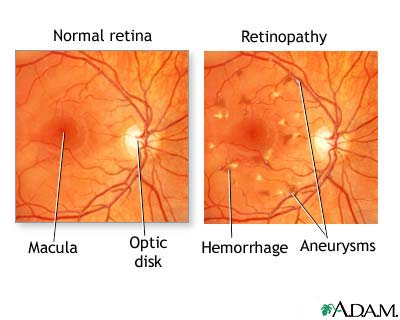
Although the risk of developing diabetic eye disease is high, it is not inevitable. Those with diabetes must monitor their blood glucose levels carefully. High glucose levels damage the blood vessels in the back of the eye. This process can begin as early as prediabetes, when the sugar level is above normal. If the vessels are damaged, they may leak fluid or swell. If they become weak, they can bleed into the middle of the eye. This can cause scarring and dangerously high pressure inside the eye.
This disease can also lead to cataracts, a cloudy spot in the lens of the eye. This can lead to reduced vision and even blindness. The good news is that diabetics can still see well without the use of glasses. However, the risk of developing cataracts is higher with diabetes, and surgery is necessary for treatment. In some cases, a cataract may affect a person’s ability to see at all.
One of the biggest complications of diabetes is an increase in the risk of developing cataracts. Cataracts are a common cause of blindness in people with diabetes. Unfortunately, there is no cure for cataracts, but there are ways to treat them. The most effective way to deal with this problem is to wear new glasses. Alternatively, you can try wearing anti-glare sunglasses. If the disease doesn’t progress, new glasses can help.
The effects of high blood sugar on the retina are devastating. The damage is often irreversible. Retina tissue in the retina is extremely fragile and susceptible to damage. The damage to the retina occurs when the blood sugar is elevated to unnatural levels. The eye may be unable to absorb the glucose in the retina, causing the blood vessels to rupture and leak. This is known as a microaneurysm, which is the most common type of diabetic eye disease.
Cataract is clouding of the lens inside the eye. This disease affects people of all ages, but is more common in people with diabetes. Cataracts are a common condition that can lead to decreased vision. If left untreated, it can lead to vision loss. Fortunately, there are many treatments for this condition, including new glasses and anti-glare sunglasses. In the most severe cases, surgery may be required.
The onset of diabetic eye disease can lead to vision loss and even blindness. This disease is the leading cause of vision loss in adults of working age. Although this condition is not as common as other eye diseases, people with diabetes are more likely to develop it than healthy people. The risk of developing cataracts in both eyes is low for both types of diabetics. But it is more common in people with diabetes.
A person with diabetes may not know they have the disease until they notice changes in their eyes. It can take years for the disease to become serious, but even for those who have had diabetes for many years, the condition can lead to other eye complications. In addition to vision loss, it can cause heart failure, kidney failure and circulatory problems in the legs. A patient with diabetes may need to have their eyes checked regularly.
In adults, diabetes increases the risk of developing glaucoma. The disease damages the optic nerve, which sends electrical signals from the eye to the brain. As a result, the retina may be permanently damaged and vision loss may be permanent. Eventually, the eye may even turn into a black hole. In the worst case scenario, a person with diabetes may experience vision problems. The most common symptoms of diabetic eye disease include sensitivity to light and blurred vision.
The most common symptom of diabetic eye disease is blurred vision. Symptoms include dark spots and streaks that can cause blurred vision. Vascular problems can also damage the retina. The patient will not be able to see anything. Health Site beatstherapeutics.com can help you manage your diabetes and improve your vision. He may also recommend medications to help a patient with this condition. Diabetic eye disease is an important part of a patient’s overall health.